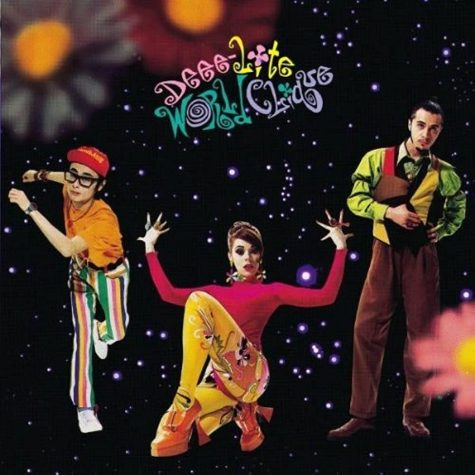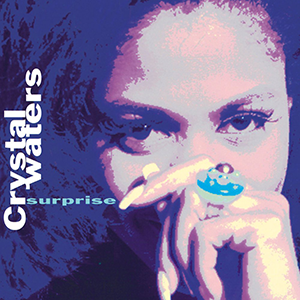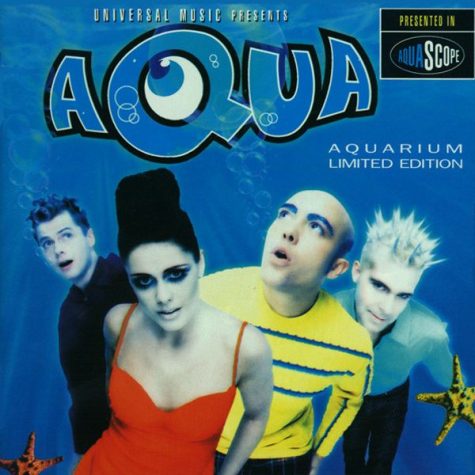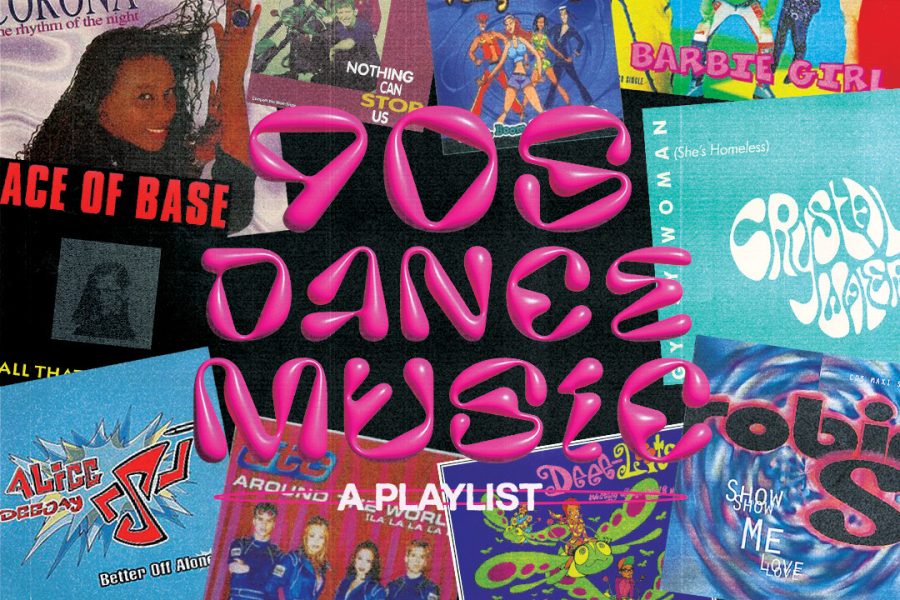Women in Music: ’90s Dance Music
A playlist showcasing the top dance songs made by women
April 28, 2023
Throughout the latter half of the 20th century, music evolved rapidly, going from ’70s disco to the emergence of electronic music in the ’80s. When the ’90s arrived, electronic music expanded into various subgenres, including house, techno and trance. As raves (dance parties commonly held underground or in warehouses that typically play electronic music) became more popular, the need for dance music became more prominent for one apparent reason — people wanted to dance!
In the United States, Germany, Italy, the United Kingdom and other countries, dance music was constantly on the charts, being heard in all kinds of clubs. The upbeat music stood in contrast to the more melancholy grunge and shoegaze genres that were also popular. Most dance songs were sung by women, as their voices blended in well with the funky, electro beats.
Here are some ’90s female dance songs to listen to.

“The Rhythm of the Night,” Corona
Not to be confused with the meme “ese son Reebok o son Nike,” the 1993 single “The Rhythm of the Night” by Italian group Corona is incredibly ’90s. The whole song feels magical, using the synthesizer’s beats to create a top-notch dance song that has you screaming the chorus. Its funky beats mixed with the soft vocals of Corona’s lead singer, Jenny B, create a song describing her love life and how she wants her lover to stay, comparing him to a “rhythm of the night.” The song was even sampled in the 2019 collaboration between the Black Eyed Peas and J. Balvin, “Ritmo (Bad Boys for Life).” At the start of the COVID-19 pandemic, “The Rhythm of the Night” began to trend due to the band’s name and its similarity to that of the virus (or maybe because people began to miss the times when they could go and dance in a club).

“Groove Is in the Heart,” Deee-Lite
Combining the aesthetics and instrumentals (such as trumpets and tambourines) of the ’60s with the electronic beats of the ’90s created a fine piece of dance music: “Groove Is in the Heart.” The New York City-based band Deee-Lite wrote this song in the late ’80s, and the song features various samples (all from the ’60s and ’70s, of course) such as “Bring Down the Birds” by Herbie Hancock and “Get Up” by Vernon Burch. Featuring Lady Miss Kier’s sultry vocals and rapping by Q-Tip, a member of the rap group A Tribe Called Quest, “Groove Is in the Heart” couples multiple singing styles. The mix also has Spanish tango, R&B and funk influences and spoken word, giving the listener a trippy feeling. Each second in the song is different, yet it meshes so well — you don’t know what to expect, but how well the piece comes together is satisfying.

“Nothing Can Stop Us,” Saint Etienne
The ’90s sure did love the ’60s and ’70s, and so did the English band Saint Etienne. Starting off the song with a talk show presenter similar to the likes of Ed Sullivan, the song slowly unfolds with flute notes and soft-spoken vocals.
When the chorus hits, lead singer Sarah Cracknell’s alluring and breathy voice intermingles with flutes, trumpets and an electric guitar that sounds like it came from a 1964 Fender or Gibson. The song ends with a clap in the audience, which is exactly how I feel after listening to this nonstop. “Nothing Can Stop Us” (like most of Saint Etienne’s songs) properly evokes the ’60s, making you almost wonder if they were time-traveling while recording this.

“Gypsy Woman (She’s Homeless),” Crystal Waters
You may have heard “Gypsy Woman (She’s Homeless)” on TikTok, namely that video of Kenny from “South Park” dancing to it. Or, you may have heard it in the club back in 1991. Regardless of where you first discovered this song, there’s one thing for sure: It is iconic. It has an instantly recognizable intro beat that brings a funky electronic sound to a piano and a simple chorus provided by singer Crystal Waters — “La da dee la da da” — that is repeated numerous times yet is insanely catchy. Despite the upbeat instrumentals, the song focuses on an important topic: homelessness. The instrumentals continue for the last two minutes, letting the listeners dance along while digesting a powerful story of being homeless in Washington, D.C.

“Barbie Girl,’ Aqua
We all saw the “Barbie” movie trailer, and we are hoping this has a feature in it. Though the song sparked a highly publicized lawsuit with Mattel, “Barbie Girl” became an upbeat, fun earworm. The cheerful and discolike instrumentals mesh with the satirical lyrics sung by Barbie (Lene Nystrøm) and Ken (René Dif). It seems like Nystrøm, the lead singer, is playing with dolls, but the subtext of the song suggests something more sexual. Regardless, Nystrøm’s girlish pitch and Dif’s nasally vocals tell such an interesting story of the dolls’ activities. It makes us want to do exactly what vocalist Dif tells us to do: “Come on Barbie, let’s go party.”















